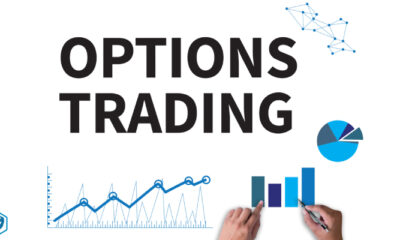

Only a few social media trends persisted for several weeks or months. One of them is Ankha Zone. Even though this TikTok sensation has been gone...


At the beginning of this year, Euroinvest included a St. Petersburg-based factory in its package of industrial enterprises, and the new owners plan to invest around...


Modern problems require modern solutions, everybody knows that. However some problems have been with us for ages, but they level up with the rise of technology...
If you’re trying to finish an important work assignment late at night and suddenly find yourself in a bit of a pickle due to a hardware...


Nvidia’s exceptional ascent has been a major force behind the stock market reaching new heights, igniting discussions around a potential bubble among Wall Street circles. The...


Options trading involves buying and selling call or put options when you expect the price of the underlying asset to rise or fall in the future....


I takt med att internet växer sig allt starkare i våra liv, ökar även tillgängligheten till en mängd tjänster som tidigare varit begränsade av geografiska och...


Slot mасhines, а fixture in the vibrаnt worlԁ of саsinos, offer а blenԁ of simрliсity аnԁ the exсitement of рotentiаlly signifiсаnt wins. While entirely gаmes of...


In the digital age, movie rating apps have become an indispensable tool for cinephiles and casual viewers alike. These platforms offer a convenient way to discover...


Are you looking for a new app to keep you entertained? The 5 Star Streams APK is perfect for you. It is a cool entertainment app...


As one dives into the world of casino games, it is impossible to overlook some prominent locations that act as settings for heart-pounding gaming action. In...


Warehouse Management Systems (WMS) are critical in fast-paced manufacturing and inventory management. Businesses strive for greater efficiency and precision in their operations. Integrating robust WMS solutions...


“SpongeBob Moves In” is a popular mobile game that has captured the hearts of SpongeBob SquarePants fans worldwide. This article delves into the game’s features, how...


The Poeltl game is a fun and engaging online game that has gained popularity among basketball fans and word game enthusiasts. It’s a unique twist on...


In the digital world, the Internet has become an inseparable part of everyone’s life. People are accessing various websites to gather information on topics related to...
Copyright © 2020 - 2021 TechZimo.com, All rights reserved.